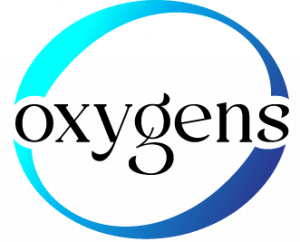You can Hire from us in in your own Home from only £495 plus VAT.
Hyperbaric oxygen therapy (HBOT) involves breathing pure oxygen in a pressurized chamber, typically known as a hyperbaric chamber. The pressure inside the chamber can be adjusted to different levels, measured in atmospheres absolute (ATA). The two levels you mentioned, 1.5 ATA and 2 ATA, refer to the pressure settings used in HBOT. Here are the main differences between them:
- Pressure Level:
- 1.5 ATA: This refers to a pressure level of 1.5 times the normal atmospheric pressure at sea level.
- 2 ATA: This refers to a pressure level of 2 times the normal atmospheric pressure at sea level.
- Treatment Depth:
- 1.5 ATA: At 1.5 ATA, the increased pressure allows oxygen to dissolve more deeply into the body tissues, reaching areas with compromised blood flow. This helps enhance oxygen delivery to these tissues.
- 2 ATA: Increasing the pressure to 2 ATA further enhances the amount of dissolved oxygen in the body tissues. It provides even greater oxygenation to compromised tissues and can potentially have more profound therapeutic effects.
- Conditions Treated:
- 1.5 ATA: Hyperbaric oxygen therapy at 1.5 ATA is commonly used for various conditions, including non-healing wounds, diabetic foot ulcers, radiation-induced tissue damage, and certain types of infections.
- 2 ATA: Treatment at 2 ATA is often used for conditions similar to those treated at 1.5 ATA. However, it may be employed for more severe or resistant cases. Additionally, 2 ATA is commonly used in the treatment of decompression sickness (the bends) in divers and carbon monoxide poisoning.
- Duration of Treatment:
- The duration of each HBOT session can vary depending on the condition being treated. However, both 1.5 ATA and 2 ATA treatments typically last for approximately 60-120 minutes per session.
- Potential Risks:
- Higher pressure levels, such as 2 ATA, can increase the risk of certain complications, including barotrauma (pressure-related injuries to the ears or sinuses) and oxygen toxicity. These risks are generally low and can be mitigated by proper monitoring and adherence to safety protocols.
1.5 ATA Hyperbaric Oxygen Pressure Uses
Hyperbaric oxygen therapy (HBOT) at a pressure of 1.5 ATA is used to treat a range of conditions. Some of the common conditions for which 1.5 ATA HBOT is prescribed include:
- Non-healing wounds: HBOT can be beneficial for chronic wounds that are resistant to healing, such as diabetic foot ulcers, venous stasis ulcers, and pressure sores.
- Radiation-induced tissue damage: HBOT may be used to help manage tissue damage caused by radiation therapy. It can improve tissue oxygenation, promote healing, and reduce radiation-related complications.
- Soft tissue infections: HBOT can assist in treating certain types of soft tissue infections, such as necrotizing fasciitis (a severe bacterial infection that affects the skin and underlying tissues).
- Osteomyelitis: This is a bone infection that may require HBOT as an adjunctive therapy to traditional treatments like antibiotics and surgical interventions.
- Crush injuries and compartment syndrome: HBOT may be beneficial in cases of severe crush injuries or compartment syndrome, where tissue damage and swelling compromise blood flow.
- Carbon monoxide poisoning: HBOT is an effective treatment for acute carbon monoxide poisoning. It helps to rapidly remove carbon monoxide from the bloodstream and restore adequate oxygen levels.
- Certain neurological conditions: HBOT is sometimes used as an adjunctive therapy for specific neurological conditions such as stroke, traumatic brain injury, and multiple sclerosis. It is believed to improve oxygenation to damaged brain tissue and promote recovery.
- Traumatic brain injury (TBI): HBOT has been investigated as a therapy for individuals with TBI. It is believed that the increased oxygen levels delivered under pressure may help improve oxygenation to damaged brain tissue, reduce inflammation, and promote healing. However, further research is needed to establish its effectiveness and optimal treatment protocols.
- Radiation therapy side effects: HBOT can be employed to manage the side effects of radiation therapy in cancer patients. Radiation therapy can sometimes cause tissue damage, especially in areas with poor blood supply. HBOT, by increasing oxygen delivery to these damaged tissues, may help improve healing and reduce radiation-induced complications.
- Delayed radiation injuries: In some cases, radiation therapy may lead to delayed tissue injuries that become evident months or years after the treatment. HBOT has been investigated as a potential therapy to address these delayed radiation injuries, such as radiation-induced cystitis or proctitis.
- Osteoradionecrosis: HBOT may be used as an adjunctive treatment for osteoradionecrosis, a rare complication of radiation therapy where the jawbone becomes exposed and fails to heal properly. HBOT aims to improve tissue oxygenation and promote healing in these cases.
- Some of the proposed mechanisms by which HBOT may potentially benefit individuals with Alzheimer’s disease include improved oxygenation to brain tissues, reduced inflammation, and enhanced neuroprotection. However, it is important to note that these theories are still being investigated and require further substantiation.{{home_url}}

